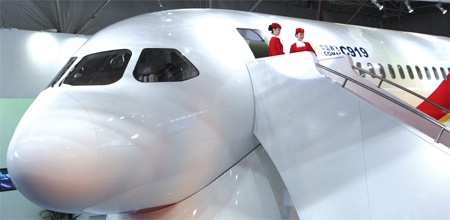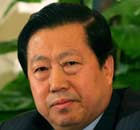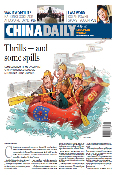Health reforms to change China's smoking culture
Updated: 2010-11-18 20:28
(Xinhua)
BEIJING - In 1638, the last emperor of the Ming Dynasty, Chongzhen, issued an imperial edict declaring the possession, use or selling of tobacco was a capital offense punishable by decapitation.
Three years later, a powerful general, who was in charge of the army guarding the border with the northeastern Manchu area, asked the emperor to end the ban, saying tobacco was crucial to boosting the morale of the soldiers and curing their diseases.
Today, tobacco is deeply entwined into the national culture from the compulsory cigarettes given to male guests at almost every wedding to the glossy images of national icons that adorn cigarette packets.
China's smokers puff their way through a bounty of cigarettes given as gifts on special occasions and holidays.
Like Chongzhen, modern China is also at war, but this time the enemy is tobacco and it is estimated to kill a million Chinese each year, says Yang Gonghuan, deputy head of China's National Tobacco Control Office.
And, like the old emperor, the government today must weigh up conflicting interests: as it extends healthcare insurance across the population, at what point do the economic and medical costs of smoking-related illnesses outweigh the financial benefits of the tobacco industry?
The number of deaths is expected to double by 2025 and triple by 2050 if China fails to reduce tobacco consumption, says Yang, also deputy head of the Chinese Center for Disease Control and Prevention (CDC).
A total of 301 million Chinese -- 28 percent of the population -- inhales a steady diet of cigarettes, according to a survey released by China CDC, the World Health Organization (WHO) and the US CDC in August.
The reduction in the number of smokers in China has been negligible, even in the five years since China ratified the WHO Framework Convention on Tobacco Control (FCTC), says Yang.
The number of smokers declined by 0.45 percent annually from 2003 to 2010, less than the 0.9 percent from 1996 to 2002, said Yang, citing a report to be published on Jan 9 next year.
Foxes vs chickens
China's tobacco consumption has been steadily growing, from 589.9 billion cigarettes in 1978 to about 2.3 trillion last year, according to the China National Tobacco Corporation (CNTC) website.
The most effective action to control tobacco consumption is to let the Ministry of Health or a new ministerial-level department take over the task of tobacco control, Yang says.
However, the ministry that sells tobacco also oversees the implementation of the anti-tobacco treaty, she says.
"It's like a bunch of foxes in the chicken coop discussing how to protect the chickens."
The CNTC, the world's largest cigarette maker, which produces more than 95 percent of China's tobacco products, is part of the State Tobacco Monopoly Administration (STMA), in turn part of the Ministry of Industry and Information Technology (MIIT).
The industry's political status, implied by the fact that the head of the STMA is also deputy head of the MIIT, allows it to influence public health policy in a way most other countries would not countenance.
The MIIT's attitude toward tobacco control was reflected in the words of Li Yizhong, the MIIT minister at the the National Tobacco Work Conference in January.
"It is our core task to control the tobacco leaf production scale," he said, before adding, "Great efforts must be taken to raise the efficiency of the tobacco industry and achieve good and fast development."
Tomorrow's burden
However, new studies are challenging the prevailing belief -- even among non-smokers -- that the tobacco industry is too important to the economy to discourage its development.
Tobacco generated 513.1 billion yuan ($77.3 billion) in taxes and profits last year, more than 7.5 percent of the total central government revenues, and employed 520,000 workers in 183 factories, said Zhang Xiulian, spokesman of the STMA, in a press conference in January.
Although the proportion of government revenues from the tobacco industry has been falling -- from 11.5 percent in 1995 to 7.5 percent last year -- Yang says the decline mainly stems from the growth of other industries.
The absolute production value of the industry rose from 100 billion yuan in 1978 to 513.1 billion yuan last year, and, she points out, "The economic cost arising from tobacco use has long been underestimated."
Citing the report to be released in January 2011, she argues the net contribution of tobacco to China's economy is about minus 20 percent.
That means the losses caused by smoking outweigh the taxes and profits it generates by about 20 percent, says Yang.
The calculation is backed by a study by the China Center for Economic Research at Peking University, Peking University's People's Hospital and the Department of Economics of Stockholm University in September 2008.
In 2005, tobacco caused direct medical costs of 166.6 billion yuan and indirect costs -- in the forms of productivity loss, years of potential life lost, and loss from fires and pollution -- of 120.5 billion yuan, resulting in a total loss of 287 billion yuan, 19.6 percent more than the 240 billion yuan in taxes and profits the industry generated.
Given that diseases and fatalities caused by tobacco use have a time lag of 20 to 25 years, it is not this government that will have to pay the medical bills for the mass addiction to the weed, says Zhi Xiuyi, head of the Lung Cancer Diagnosis and Treatment Center of the Capital Medical University in Beijing.
Cases of lung cancer in China have soared by 465 percent since 1980, and account for nearly a quarter of cancer deaths, says Zhi, also head of the department of tobacco control and lung cancer prevention at the Cancer Foundation of China.
In the past, when individuals, work units and companies covered health insurance and medical care, the nominal cost to the government was negligible, says Zhi.
However, the government is rolling out its own health insurance program across the country, so it will become more liable for the costs of smoking-related illnesses, he says. "At the end of the day, all Chinese, including non-smokers, will be burdened with the medical costs of smokers."
Taxing the habit
Raising taxes and prices have been proved to be the most effective means to reduce smoking, says Teh-wei Hu, professor of health economics in the School of Public Health, University of California, Berkeley.
However, cigarettes have become more than twice as affordable in China since 1990, and smoking is much cheaper than in other countries, says Hu, also a senior policy advisor to China's Ministry of Health.
The overall effective tax rate of 40 percent on a packet of smokes in China is much lower than the international average which ranges from 65 percent to 70 percent.
The tobacco industry has long argued that tax increases risk cutting government revenues, but Hu says a tax rise would actually raise revenues while reducing tobacco demand.
In Thailand, as the tobacco tax rate increased from 55 percent in 1992, to 70 percent in 1999 to 79 percent in 2006, packets of cigarettes sold fell from 2.035 billion, to 1.81 billion to 1.793 billion, according to the Excise Department and the Ministry of Finance of Thailand.
The data also showed revenues generated by the industry grew from 15.44 billion Baht ($514 million) in 1992, to 26.71 billion Baht in 1999 to 35.65 billion Baht in 2006.
Hu's study showed that raising the tax on a pack of cigarettes by 1 yuan would increase the Chinese government's revenues by 64.9 billion yuan, reduce the number of smokers by 3.4 million, reduce medical costs by 2.68 billion yuan and generate a productivity gain of 9.92 billion yuan.
However, the decision to raise consumption tax on cigarettes by between 6 percent and 11 percent in May 2009 brought increased revenues -- but no reduction in tobacco use.
"The tax increases had no impact on cigarette prices set by the STMA, as the tobacco producers and dealers had a big enough profit margin to absorb the burden themselves rather than pass it on to consumers," Hu says.
If China's tobacco tax rose to 51 percent, from the current 40 percent, of the retail price, the price of cigarettes would be affected and the number of smokers will decrease, according to Hu's study.
The effect of price increases is also weakened by the wide price range, with the cheapest costing about 30 US cents per pack and the most expensive as much as $80, which makes it easier to switch to cheaper brands, Hu says.
As more than half of Chinese smokers pay less than 5 yuan per pack, a big enough tax hike would persuade many poorer smokers to quit if almost 11 percent of their household expenditure went on cigarettes, says Hu.
Disgusting pictures
Given China's unique tobacco culture, experts say clear health warnings on cigarette packets would be another effective tool in curbing demand.
Cigarettes are often handed out as gifts to parents, bosses, teachers and even doctors. Traditional wedding dinner ritual requires the bride to light a cigarette for each of her male guests.
Putting clear and gruesome pictures on packaging would be very effective in reducing demand in China, says Jiang Yuan, deputy head of the China National Tobacco Control Office.
"First, this would help eradicate the tobacco culture and help scare away many potential smokers; secondly, as a large quantity of cigarettes are bought in China as gifts for family or bosses, a big picture of a horrible lung would gradually stop many from seeing it as gift," she says.
However, health warnings on Chinese cigarette packs never include pictures and are in tiny characters, half of which are in English that most Chinese cannot understand, but the cigarette makers put large warning signs on the packs sold abroad to accord with local laws.
But many fear gruesome pictures, such as diseased lungs, on cigarette packs could provoke an outcry, as Chinese brands often have names related to its cultural and historical heritage, such as "Zhonghua" (China), "Zhongnanhai" (the residence of China's leadership), "Huangshan" (Huangshan Mountain), "Panda" and even "The Great Hall of the People."
Many people, including those anti-smoking campaigners, argue that revolting pictures would deface China's image.
At the 2008 International Tobacco Control Conference in Durban, South Africa, China was given the "Ashtray Award" because it "would rather have pretty cigarette packs than healthy citizens."
Experts say a national law to ban smoking in public places and regulate health warning labelling would be effective. "The process is very slow. If you want to know the reason, please ask the STMA," says Jiang.
Paper's Digest

Chinese jet takes on Big 2
First large commercial plane set to ride on demand for aircraft as economy grows.
Super-CPU only for domestic eyes
Specials

Chinese jet takes on Big 2
First large commercial plane set to ride on demand for aircraft as economy grows.

Gaining ground
Doing business in china for westerners has come a long way, Peter batey says.

Safeguarding environment a priority
China continues to face mounting pressure to curb environmental degradation, despite progress in reducing pollution over the last five years, the environmental protection minister warned.





